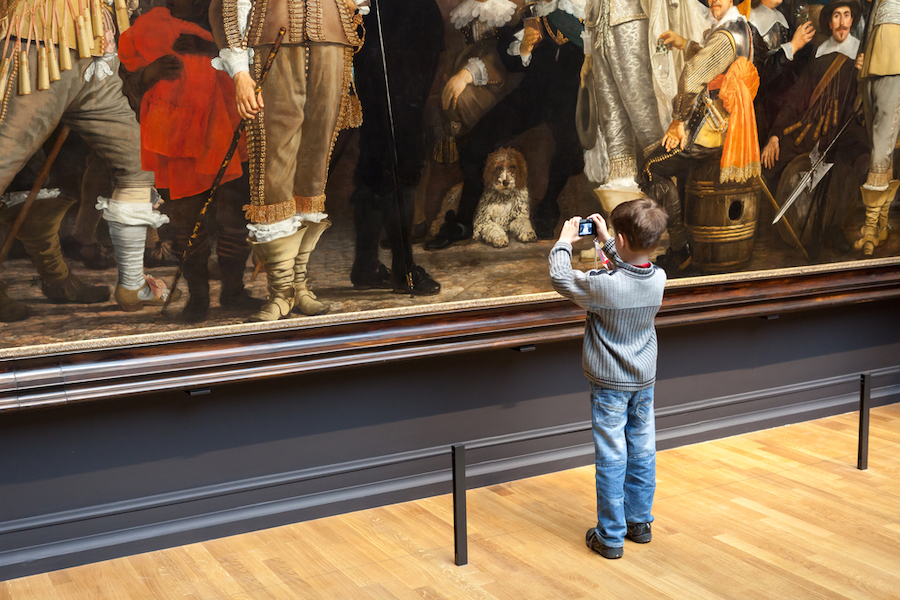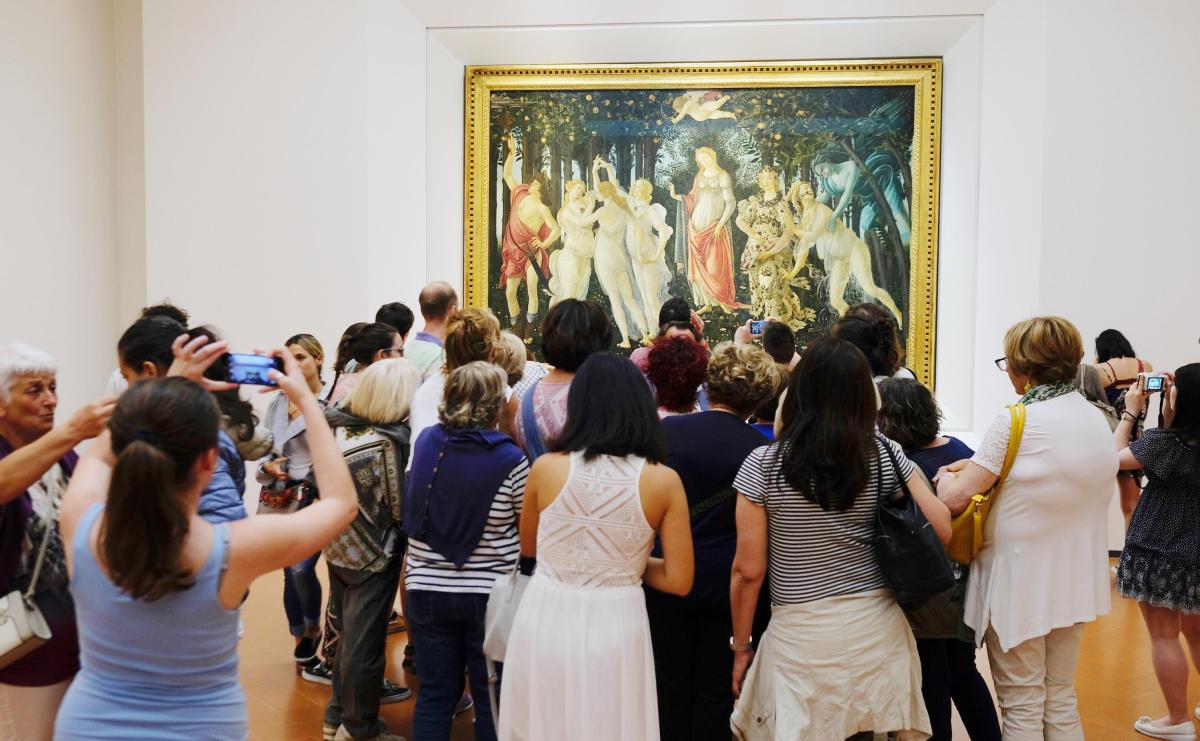COVID-19 has been a catalyst for increased glocalism – that mash-up of global concerns intertwined with local considerations. Simply, we have been forced to become local – even “hyperlocal” under lockdown.
While, as a sector, we are grappling to understand what that might mean to our futures, more abstract is how that might impact our visual read on the world, in the art we make and engage with.
For example, while glocalism is not a new term – more traditionally emergent around topics like consumerism, economic reform, and even climate change – this year it has entered conversations and actions around racial violence, equality and empathy, and a very local responsibility for change.
The visual arts has been quick to step up to these conversations.
But then, the visual arts have always faced the “big topics” on both a grand scale through major exhibitions, and in the intimate processes of creativity. At both levels, “the local” has been thrown into overdrive, thanks to COVID-19.
Enter the local blockbuster.
A new model for exhibitions
Sharon Matt Atkins, director of exhibitions and strategic initiatives at the Brooklyn Museum (USA), told The Art Newspaper: ‘Even before COVID, the Brooklyn Museum developed a new model for exhibitions, beginning with the premise that high organisational costs, which have often characterised blockbuster exhibitions, are not necessarily required to achieve “must see” excitement.’
Atkins and her team have been successful in drawing on the collection at the Brooklyn Museum, plus local surveys, to create their own “must see” shows.
She believes that the current pandemic offers an opportunity for an exhibition reset internationally, and ‘a moment to rethink how we can continue to serve our audiences, while also continuing to generate revenue to keep our doors open.’
We are starting to witness this across our own gallery and museum landscape in Australia.
AGNSW Director, Michael Brand said that while their November Matisse blockbuster coming from the Centre Pompidou in Paris had been postponed, the gallery was using this moment to focus on its own ticketed exhibition.
‘The restrictions on international travel made it impossible for the Gallery to host the exhibition this year, but the Gallery is delighted to be staging the major Streeton exhibition over the summer,’ said Brand.
AGNSW has pushed its Streeton exhibition into the spotlight as a kind of “home grown blockbuster”. Also showing now is the major collection exhibition, Some Mysterious Process: 50 Years of Collecting International Art – a star studded line-up that would arguably be the perfect local touring blockbuster.
We have also seen this trend at the Museum of Contemporary Art Australia (MCA), bumping its major survey of Australian artist Lindy Lee from July to October in the wake of Doug Aitkin’s survey delay, while the National Gallery of Victoria’s (NGV) survey of Destiny Deacon has also been reshuffled to July, with the prolonged postponement of its Pierre Bonnard exhibition to 2023.
Read: Will Blockbuster exhibitions be the collateral damage of COVID?
A spokesperson from the NGV told ArtsHub: ‘The rescheduling of this ticketed exhibition has allowed us to continue planning and preparation for a line-up of exhibitions opening in 2020, including the upcoming major retrospective of Destiny Deacon’s work in the exhibition DESTINY at NGV Australia opening in July, as well as …the upcoming major exhibition TIWI featuring nearly 300 works of Tiwi art and design opening at NGV Australia in November this year, and the NGV’s summer exhibition for 2020/2021, the second NGV Triennial (the inaugural display was the most visited in NGV’s history) at NGV International.’
Indeed, the focus is clearly local.
Perhaps leading the charge in rethinking the local blockbuster is the Australian Museum (AM), which has blatantly attached the blockbuster label to its Spring exhibition, which will reopen their newly renovated galleries in the place of the major touring show, Tutankhamun: Treasures of the Golden Pharaoh.
‘We’re now programming alternative exhibitions, which will appeal primarily to a local audience as it is doubtful international tourism will resume here until mid-next year,’ said AM Director Kim McKay. ‘The AM will continue to develop its own blockbuster exhibitions touring to key markets around the world after they premiere in Sydney,’ she told ArtsHub.
AM has shown the way in packaging these shows for off-shore markets.
The AM has a successful track record of touring its own exhibitions internationally including Tyrannosaurs Meet the Family (currently in lock down at the Royal Museum of Scotland) and Spiders (which recently completed its record-breaking run at the Royal Ontario Museum in Canada), McKay continued.
This re-think is happening globally, which Atkins described as, ‘an opportunity to reimagine different exhibition models, while still providing similar motivators that originally drove the blockbuster trend.
‘These approaches minimise the overall costs, ultimately yielding a higher return on investment. Perhaps most importantly, they also reduce the carbon-footprint of exhibitions,’ Atkins added.

Image via Shutterstock.
Recalibrated thinking in a post-covid, post-blockbuster art world
There has been much conversation around the success that arts organisations have had in better digital programming and engagement during COVID-19.
‘In terms of our digital forefront, we have done more in three months than we have done in the past three years,’ said Assistant Director Queensland Art Gallery / Gallery of Modern Art (QAGOMA), Simon Wright.
‘We had 600 people do our life drawing class on a Saturday, online. That is a record for any virtual event for us! After that event, that community of 600 hundred drawings floated around on social media. We need to remind them that QAGOMA brought them together, and to keep them engaged – it is about finding new homes for our programs.’
What Wright outlines is new knowledge in the capacity to engage local audiences at blockbuster proportions. ‘We had almost 370,000 YouTube videos views in that period. This is real content being viewed; it’s not just puff stuff.’
It was echoed by NGV who told ArtsHub: ‘The temporary closure of the NGV has also provided an opportunity to amplify the role of the NGV Collection as a conduit for learning, sense of community and wellbeing, and to reach more people through digital engagement.
‘The digital art experience continues to be to central to augment and enrich the in-gallery visit. We have more than 300,000 visit our virtual exhibition tours and 11,000 students and teachers sign up for virtual excursions, and it continues to develop as an area for continued growth and sustainability across all aspects of Gallery business,’ NGV added.
‘We learned that even in a virtual setting, art and design can connect and inspire people. Now that the NGV has re-opened, the balance between the physical visit and digital experience is central to sustaining connection with diverse audiences.’
Many museums have historically staged these blockbuster exhibitions to grow audiences and to bring in revenue, but COVID-19 has proven it can be done also via other avenues – at less cost.
Atkins points out that, ‘In the COVID and post-COVID world, museums will face even greater reductions in contributed income and earned revenue. As a result, nearly all will need to rethink their operating models to fill increasingly large gaps between revenue and spending as philanthropy alone cannot match the costs of operation.’
This is doubly so in Australia, as government funding has also retreated from the ecosystem.
The whole kernel of thinking around a blockbuster – or major exhibition which is the preferred term today – is that they offer new experiences and rare viewing opportunities. And as international travel, along with complexities of art freight and insurance, create their own pressures on exhibition schedules, domestic travel is being encourage (within health and safety regulations).
‘Museum audiences are likely to become hyperlocal with increased appetites for engaging, dynamic experiences in their backyards.’
Sharon Matt Atkins, Brooklyn Museum.
‘In order for museums to continue to generate earned revenue, they will need to continue to offer new, compelling reasons to visit, and to return, even if the overall attendance numbers will be lower due to safety protocols and physical distancing guidelines,’ says Atkins.
A cynic’s would imagine pressure from state tourism departments to maintain hotel stays and cultural tourism spends that come with “must see” exhibitions. But given COVID-19 has hardly seen government support commensurate with the level of financial gain – some $117 Billion we are told contributed by the arts – then one might think again the cost of the blockbuster investment.
Taking a helicopter view over this imagined future, there seems to be a two-way divide here: local majors will be celebrated as the touring international blockbuster market falters and will be given greater value in the bigger picture; and secondly, the realisation that a blockbuster’s function to draw new audiences can be achieved by rethinking the value of alternate programming.
The quick argument is that this engagement will not offer the same numbers as a blockbuster – but if one was to survey the level of engagement achieved in just the past three months alone, imagine the result when more strategically programmed.
The other fear is that parochialism, paired with distance and more expensive travel, is a dangerous recipe for a flourishing art world.
There is a third consideration – the carbon footprint of exhibitions.
Many of our state galleries and museums are actively engaging strategic sustainability programming for greater energy efficiency, waste management and building loads. International blockbusters are clearly out of sync with this larger corporate mission of a green agenda.
Perhaps this wider vision is too idealistic? Time will tell when current program commitments are exhausted.





